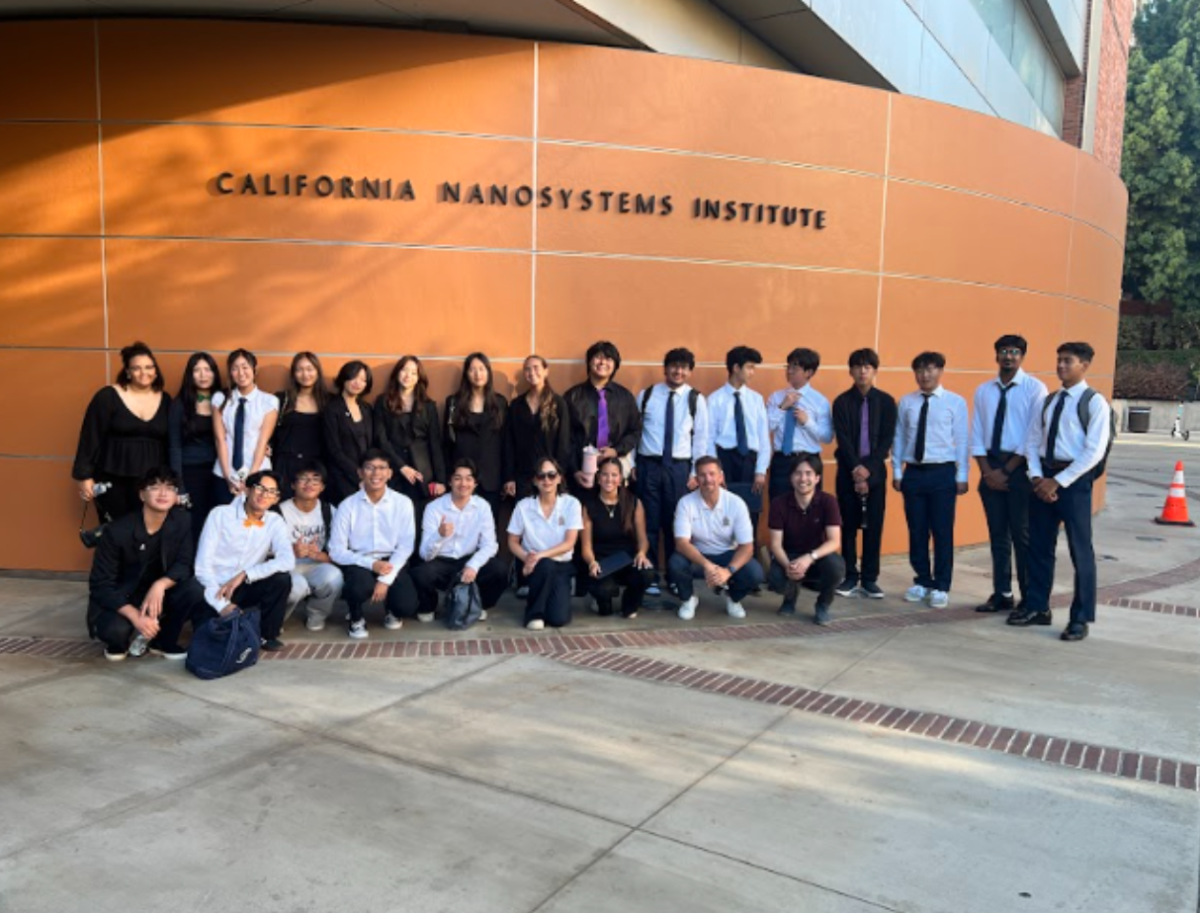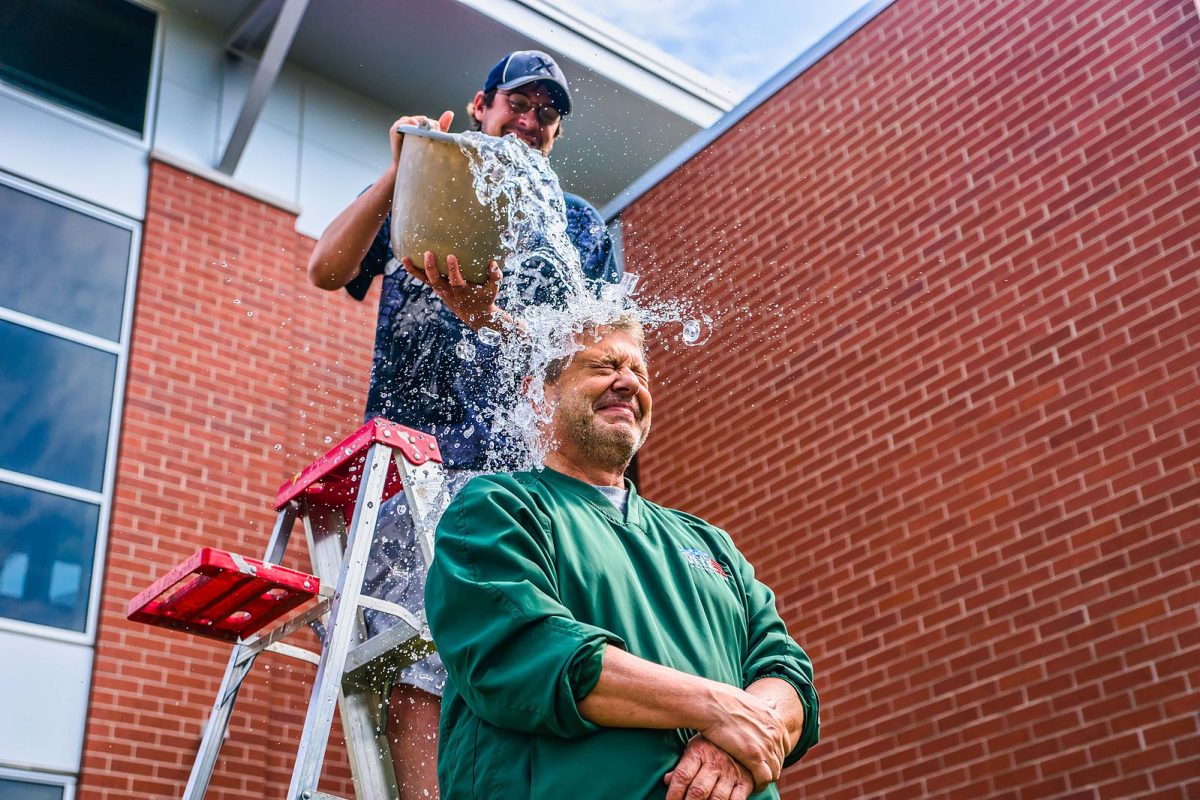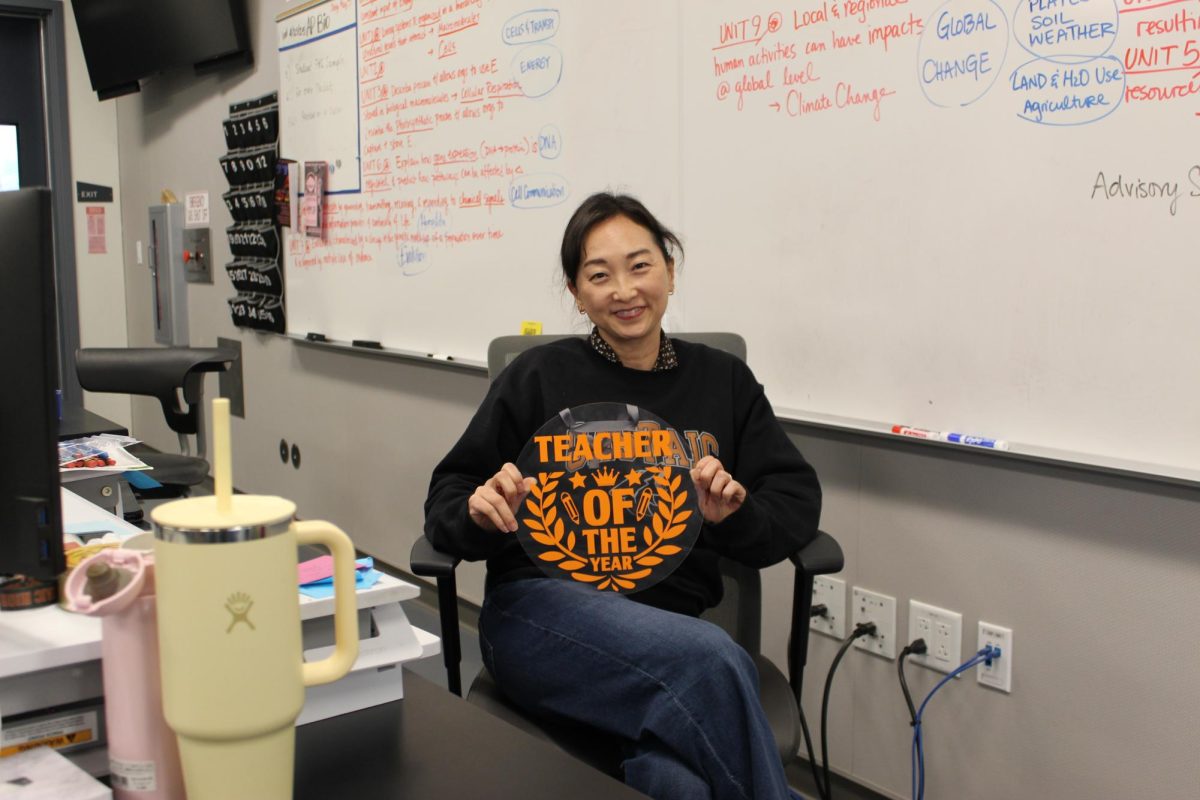On Aug. 2, 2024, Castaic High School’s Cancer Research program took a field trip to the University of California Los Angeles, where they presented their research projects on glioblastoma, second hand lung cancer, lung cancer, therapy for glioblastoma, and melanoma. There were seven judges, consisting of both professors from UCLA’s medical and pharmacology professors, PhD students, college students, and one high school student. They used a rubric to equally score the students based on their content and execution.
Through the guidance of AP Biology and AP Environmental Science teacher, Ms. Song, the groups worked together to research various topics and successfully and neatly gather their information into a slideshow. These research groups consisted of Castaic, Valencia, and West Ranch students.
This years presentation winners were the researchers of second hand lung cancer. Seniors Chloe Na, Nyiema Collier, Viveka Diwakar, and junior Amanda Bradbury spent around 75 hours researching and preparing their winning presentation for the UCLA judges. Collier explained how their project was based around the question, “why do Asian American women with non smoking habits have higher incidence rates of lung cancer compared to other demographics with similar non smoking habits?”
“We concluded that there were acculturation, environmental, and genetic factors contributing to the increasing rates,” said Collier.
Since it is common for Asian males to smoke, second hand smoke greatly increases the risk of second hand lung cancer for Asian women. Furthermore, most Asian countries have some of the highest rates of air pollution, creating a bigger risk for non-smoking individuals.
“We found that Asian women may be genetically predisposed to mutations in the epidermal growth factor receptor gene, which causes non-small cell lung cancer,” said senior Chloe Na. “However, there is a negative correlation between EGFR mutations and smoking.”
As the winning research project, a lot of research, time, and effort went into making this project close to perfect, with the correct facts and statistics backing it up. Viveka Diwakar elaborated on how they approached their project from various angles, creating a clear explanation for the higher incidence rates of lung cancer among Asian women.
“By approaching the question from various aspects, we were able to provide a more complete
picture of the causes and the future steps we need to take to reduce the incidence,” said Diwakar.
Seniors Anabelle Lopez, Jeanelle Estrella, Krystal Luna, Wesley Tucker, and junior Gina Angles focused on researching glioblastoma, a very common type of brain cancer amongst both male and female adults.
“During our research program we learned and researched so much about this cancer, starting on what it is, why it is so deadly, and how to treat it,” said Angles.
Their in depth research revealed the dangerous and fatal reality of this cancer. Angles explained that this specific brain tumor is located in the center of the brain, making it almost impossible for doctors to successfully treat it.
“The cells surrounding the tumor control [the motor area] and other critical functions to survive,” said Angles. “This makes it very difficult for the surgeon to resect the tumor because they don’t want to harm any of the cells that can control these functions, or cause swelling to the brain which results in death.”
During the four to six weeks they spent researching their topic, the group found a very peculiar piece of information.
“We learned women have a better chance of surviving because of the estrogen in our bodies,” said Lopez.
Krystel Luna explained how female hormones, such as estrogen, contribute to the early diagnosis of Glioblastoma, creating a higher survival rate for females.
The third group researched and learned about Lung Cancer. Juniors Cody Tran, Miles Chu, Brian Le, and Justin Ro concentrated on discovering why African American males had a higher mortality rate of adenocarcinoma in the lungs.
Le explained how there are two main factors to the high mortality rates. One of them being the genetic mutation of the PTPRT and JAK2 gene. These two genes help combat the risk of cancerous cells, but with the genetic mutation, there are higher risks of cancer. The second factor is due to the African Americans enduring discriminatory treatment amongst medical treatments.
“I focused more on the social side of it, where African Americans are less likely to be given treatment or screened early for lung cancer,” said Tran.
Miles Chu and Cody Tran both researched how prejudice has led to the African Americans becoming extremely under researched, becoming a main factor for the high mortality rates of Lung Cancer.
“There’s this technology called molecular testing and we found how African Americans are significantly less likely to go through molecular testing,” elaborates Chu.
According to Cancer.gov, molecular testing is a laboratory procedure in which a sample of tissue or blood is taken to check for genes or proteins that could be a sign of a disease or illness, like cancer.
Unfortunately, racist ideology in medical fields creates a major impact on patients, leading to higher risks and even fatalities among African Americans.
These groups researched their whole summer, taking up to six weeks researching and finalizing their projects. They worked up to five hours a day, surfing the internet for extensive medical articles that were both credible and fit their topic. Working in groups, either with friends or mere acquaintances, is a challenging experience, but helps create good communication skills.
“I’d say that group projects are never easy, even with your friends,” says Chloe Na. “But I am glad that things came together in the end and we could communicate our concerns with each other.”
In order to be accepted into the research program, students had to answer a short essay question, writing at least a paragraph stating their interest in participating in the program.
Anybody is welcome to join, as Ms. Song encourages her students and Science Olympiad participants to participate in this unique experience. There are a variety of students who join, both with and without interest in researching and working in the medical field.
“I am interested in this field of research because I believe that it is meaningful as an Asian American and as a person that is interested in STEM,” says Na. “However, I also enjoy looking at other aspects of research that have to do with public health and the social sciences, because it is valuable to be able to look at problems from different perspectives.”
Krystal Luna shares similar ideas to Na’s, but also wants to highlight her artistic vision in her future.
“This program was very influential because I want to study something related to oncology or biology. I also want to be able to mix science with my love of art.”
Whether students are interested in research, STEM majors, or are looking for something new to broaden their horizons, the Cancer Research Club and program is an amazing, thought-provoking, and eye-opening experience. From researching among peers while also receiving helpful lessons from Ms. Song, anyone could create an incredible research project that is bound to wow top level professors and students.









Kate Song • Sep 24, 2024 at 2:31 pm
This is such a comprehensive, well written article – thank you Jocelyn for doing the research and interviewing multiple groups – terrific job!